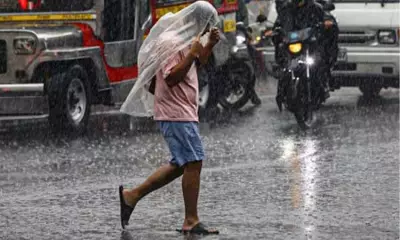
The combined force of a powerful earthquake and Typhoon Tino triggered catastrophic flash floods that devastated Cebu City, with many questioning whether human activities significantly worsened the natural disaster.
The crisis began with strong seismic activity, immediately followed by Typhoon Tino's torrential rains that caused sudden, grabbing flash floods throughout the metropolitan area.
Scene of Destruction
Distributed images and videos circulating online reveal a landscape of horror that appears more cinematic than real. The visual evidence shows houses and vehicles piled atop one another after being swept away by floodwaters, animals floating in the currents, and homeowners trapped on their roofs desperately awaiting rescue.
Perhaps most heartbreaking are scenes of small children being placed in wash basins and ice buckets just to keep them afloat as families attempted to cross the raging waters.
The flooding created secondary crises including severe shortages of drinking water, food supplies, electricity, and telecommunications signals. Many residents lost everything except the clothes on their backs as their homes were completely washed away by the powerful currents.
Beyond Natural Causes
While Typhoon Tino provided the immediate trigger for the disaster, many are questioning whether human activities created the conditions for such devastation.
Large-scale deforestation in mountainous areas to make way for condominium and hotel developments has removed natural barriers that would typically absorb rainwater. Simultaneously, quarrying operations extracting granite and dolomite for construction materials have further destabilized the landscape.
Currently, 11 mining companies continue extraction activities beneath the soil and throughout the mountains, despite environmental concerns.
Another significant concern involves questionable flood control projects that remain unfinished despite billions of pesos allocated since 2022. The drainage systems show little improvement despite substantial government spending, raising questions about project implementation and management.
Emergency Preparedness Recommendations
In light of the disaster, authorities emphasize the importance of emergency preparedness. Before storms arrive, residents should:
- Stockpile non-perishable food items (canned goods)
- Store adequate drinking water
- Prepare basic medical kits
- Keep emergency contact numbers accessible
- Fully charge phones with extra batteries and load
- Waterproof important documents in plastic containers for quick evacuation
The Cebu floods serve as a stark reminder that some disasters stem from both natural forces and human decisions, highlighting the urgent need for sustainable environmental management and effective infrastructure development.





